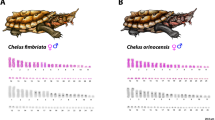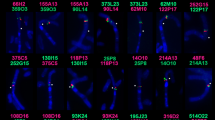Abstract
THE materials examined consisted of testes from five farm-bred blue foxes (Alopex lagopus (L.)) which were killed by electrocution during the breeding season. The testes were immediately removed, teased in distilled water where they remained for about 10 min. and then the pieces were put in either aceto-orcein or 50 per cent acetic acid. From the aceto-orcein coloured preparations, temporary slides were made by the usual squash methods. The preparations fixed in 50 per cent acetic acid were squashed in the same manner and coloured by the Feulgen method1.
This is a preview of subscription content, access via your institution
Access options
Subscribe to this journal
Receive 51 print issues and online access
$199.00 per year
only $3.90 per issue
Buy this article
- Purchase on SpringerLink
- Instant access to full article PDF
Prices may be subject to local taxes which are calculated during checkout
Similar content being viewed by others
References
Matthey, R., Rev. Suisse. de Zool., 60, 225 (1953).
Andes, A. H., Cyt., 9, 35 (1938–39).
Wipf, L., and Shackelford, R. M., Proc. U.S. Nat. Acad. Sci., 35, 468 (1949).
Author information
Authors and Affiliations
Rights and permissions
About this article
Cite this article
LANDE, O. Chromosome Number in the Blue Fox (Alopex lagopus (L.)). Nature 188, 170 (1960). https://doi.org/10.1038/188170a0
Issue Date:
DOI: https://doi.org/10.1038/188170a0



